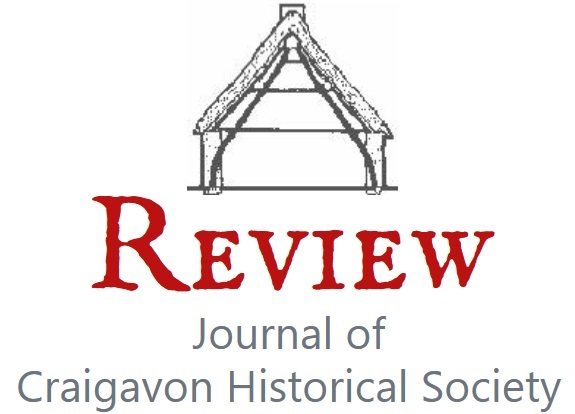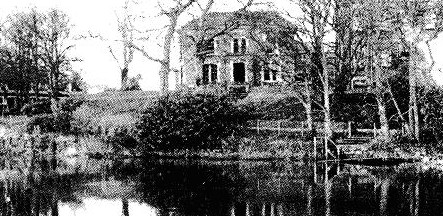
Vol. 8 No. 1 - 2001
Portadown College in the past
by Rosalind Hadden
Our cover picture for this issue [Review Vol.8 No.1] was chosen to mark the 75th anniversary of Portadown College. This was celebrated in an illustrated historical booklet by Philip Henry, one of the Governors, which appeared in the summer of 2000, just three-quarters of a century after the first Board of Governors was formally established on 26 March 1925.

The school actually started life in 1921 as the Carleton Collegiate School in St Mark's former Parochial Hall in Carleton Street; its founding headmaster was Mr W J Warren M.A., who before war service in 1914-18 had been joint principal of Banbridge Academy.
Larger premises needed
The new school grew rapidly and larger premises were acquired in October 1924 when Mr Hamilton Robb's dwelling house on the Edenderry bank of the River Bann was purchased by a group of prominent local citizens and made available to Mr Warren.
The total cost of £4,400, including improvements, was raised by a loan from the Ulster Bank on the personal security of these seven local Trustees. They were:
- William Moffat Clow, Miller
- William Laird Cowdy, Linen Manufacturer
- Thomas Cordner, Merchant
- George Dougan, Medical Doctor
- John Davison, Merchant
- Samuel Lutton, Linen Manufacturer
- David William Thornton, Merchant.
Our picture (taken much later) shows the original "Edenderry House" at the left. Next on the right can be seen part of the cloistered courtyard/assembly hall block added in 1927, and finally the large new classroom/laboratory wing added in 1936. The puff of white smoke is escaping from Robb's Factory, out of the picture to the right.
College moves to new site
Space soon ran out again, however, and in 1949 the Preparatory Department of the College moved to a second and larger site on the Killicomaine Road.
In 1962 the rest of the school moved up there too, and the old buildings were taken over for a variety of other uses - most recently as "Bann House", area headquarters for the musical activities of the Southern Education and Library Board.